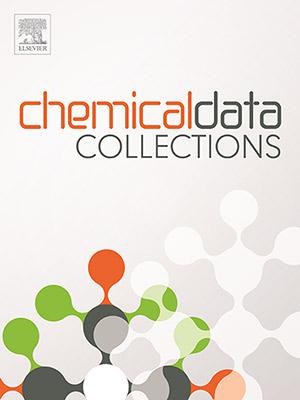评价提取方法对摩洛哥坚果油理化性质和保质期的影响
IF 2.7
Q2 Chemistry
引用次数: 0
摘要
摩洛哥坚果油(AO)的提取工艺包括机械压榨和手工方法,对其化学成分和油的氧化稳定性有直接影响。本研究考察了不同提取工艺对AO的组成、质量和稳定性的影响。从同一批次玉米粒中制备了四种不同类型的AO。第一种是通过机械压榨从烤仁(EPAO)中获得的食用油;第二种是化妆品油,用同样的方法从未烘烤的果仁(CPAO)中生产;第三种是手工食用油(AEAO);第四种是由山羊反刍坚果制成的手工食用油(AEAOG)。结果表明,提取工艺对AO样品的化学质量和氧化稳定性有显著影响(p < 0.05)。游离脂肪酸含量(FFA)为0.20 ~ 0.25 g/100 g,过氧化值(PV)为0.52 ~ 1.48 mEq O2/kg,消光系数K232和K270分别为1.13 ~ 1.39和0.18 ~ 0.25。皂化(SV)和碘(IV)值分别为193.14 ~ 193.78 mg KOH/g和100.88 ~ 103.30 g /100 g。脂肪酸分析表明,饱和脂肪酸(SFA)在18.52±0.20 ~ 19.52±0.77 g/100 g之间波动,不饱和脂肪酸(UFA)在79.9±0.72 ~ 80.75±0.30 g/100 g之间波动。甾醇的浓度最高,为44 ~ 47 g/100 g。生育酚含量为659.90 ~ 765.90 mg/kg, β-胡萝卜素含量为11.45 ~ 20.50 mg/kg,磷脂含量为0.07 ~ 3.41 mg/kg。在温度为363 ~ 413 K(90 ~ 140℃),空气流速为20 L/h的条件下,采用ranimat法进行加速氧化试验,以确定油的动力学参数。室温下,EPAO的氧化稳定性最高,诱导时间为22±3个月,其次为AEAO和AEAOG,诱导时间均为15±2个月。然而,CPAO的稳定性较低,诱导时间为11±1个月,需要特殊的储存措施。本文章由计算机程序翻译,如有差异,请以英文原文为准。

Evaluating the effects of extraction method on physicochemical properties and shelf-life of argan (Argania spinosa L. Skeels) Oil
Argan oil (AO) extraction processes including mechanical pressing and artisanal methods have a direct influence on the chemical composition and the oil oxidative stability. This study examines the impact of different extraction techniques on the composition, quality, and stability of AO. Four types of AO were prepared from the same batch of kernels. The first is an edible oil obtained by mechanical pressing from roasted kernels (EPAO); the second is a cosmetic oil, produced using the same method from unroasted kernels (CPAO); the third is an artisanal edible oil (AEAO); and the fourth is an artisanal edible oil made from nuts regurgitated by goats (AEAOG).
The outcomes reveal that the extraction processes used significantly (p < 0.05) impacted the chemical quality and oxidative stability of the AO samples. Free fatty acids content (FFA) varied from 0.20 to 0.25 g/100 g, peroxide value (PV) from 0.52 to 1.48 mEq O2/kg, and coefficients extinctions K232 and K270 from 1.13 to 1.39 and 0.18 to 0.25, respectively. Saponification (SV) and iodine (IV) values ranged from 193.14 to 193.78 mg KOH/g and from 100.88 to 103.30 g I2/100 g, respectively. Fatty acid analysis shows that saturated fatty acids (SFA) oscillated between 18.52 ± 0.20 and 19.52 ± 0.77 g/100 g, while unsaturated fatty acids (UFA) range was between 79.9 ± 0.72 and 80.75 ± 0.30 g/100 g. Among the sterols, schottenol was present in the highest concentrations, ranging from 44 to 47 g/100 g. Tocopherol levels ranged from 659.90 to 765.90 mg/kg, β-carotene from 11.45 to 20.50 mg/kg, and phospholipids from 0.07 to 3.41 mg/kg.
Accelerated oxidation tests, carried out using the Rancimat method at temperatures ranging from 363 to 413 K (90 to 140 °C) under an air flow of 20 L/h, were used to determine the kinetic parameters of the oils. At room temperature, EPAO showed the highest oxidative stability, with an induction time of 22 ± 3 months, followed by AEAO and AEAOG, both with 15 ± 2 months. However, CPAO showed a lower stability, with an induction time of 11 ± 1 months, requiring special storage precautions.
求助全文
通过发布文献求助,成功后即可免费获取论文全文。
去求助
来源期刊

Chemical Data Collections
Chemistry-Chemistry (all)
CiteScore
6.10
自引率
0.00%
发文量
169
审稿时长
24 days
期刊介绍:
Chemical Data Collections (CDC) provides a publication outlet for the increasing need to make research material and data easy to share and re-use. Publication of research data with CDC will allow scientists to: -Make their data easy to find and access -Benefit from the fast publication process -Contribute to proper data citation and attribution -Publish their intermediate and null/negative results -Receive recognition for the work that does not fit traditional article format. The research data will be published as ''data articles'' that support fast and easy submission and quick peer-review processes. Data articles introduced by CDC are short self-contained publications about research materials and data. They must provide the scientific context of the described work and contain the following elements: a title, list of authors (plus affiliations), abstract, keywords, graphical abstract, metadata table, main text and at least three references. The journal welcomes submissions focusing on (but not limited to) the following categories of research output: spectral data, syntheses, crystallographic data, computational simulations, molecular dynamics and models, physicochemical data, etc.
 求助内容:
求助内容: 应助结果提醒方式:
应助结果提醒方式:


